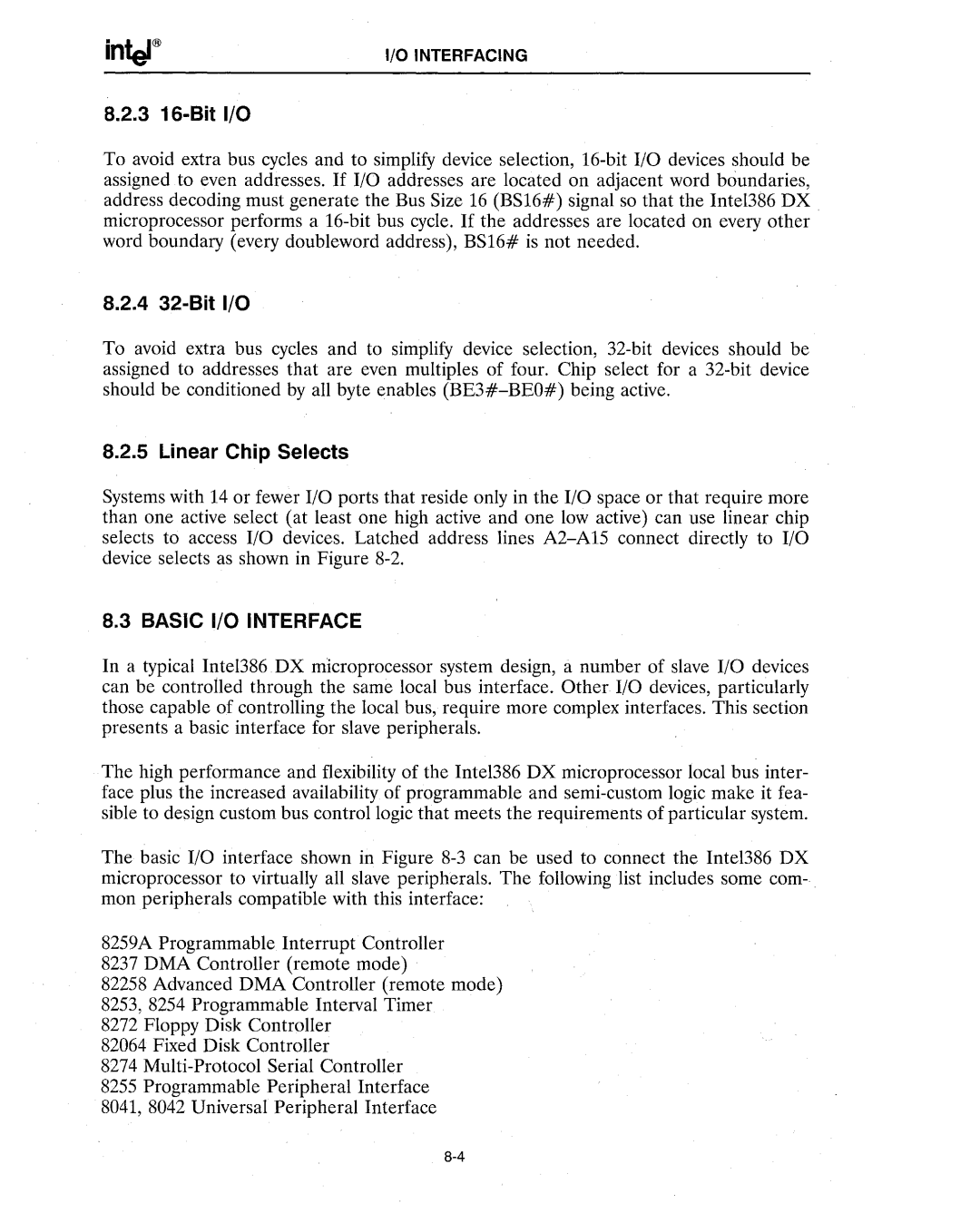
I/O INTERFACING
8.2.3 16-Bit I/O
To avoid extra bus cycles and to simplify device selection,
8.2.4 32-Bit I/O
To avoid extra bus cycles and to simplify device selection,
8.2.5 Linear Chip Selects
Systems with 14 or fewer I/O ports that reside only in the I/O space or that require more than one active select (at least one high active and one low active) can use linear chip selects to access I/O devices. Latched address lines
8.3 BASIC I/O INTERFACE
In a typical Intel386 DX microprocessor system design, a number of slave I/O devices can be controlled through the same local bus interface. Other I/O devices, particularly those capable of controlling the local bus, require more complex interfaces. This section presents a basic interface for slave peripherals.
The high performance and flexibility of the Intel386 DX microprocessor local bus inter- face plus the increased availability of programmable and
The basic I/O interface shown in Figure
8259A Programmable Interrupt Controller
8237 DMA Controller (remote mode) .
82258 Advanced DMA Controller (remote mode) 8253, 8254 Programmable Interval Timer
8272 Floppy Disk Controller
82064 Fixed Disk Controller
8274
8255 Programmable Peripheral Interface 8041, 8042 Universal Peripheral Interface
